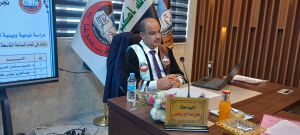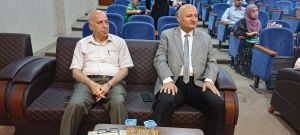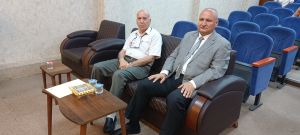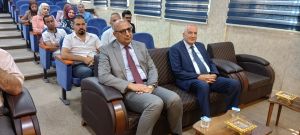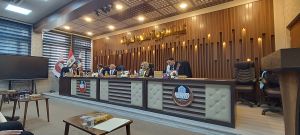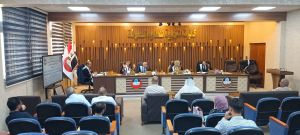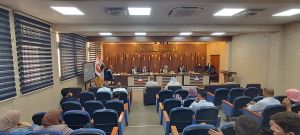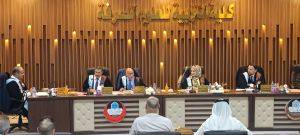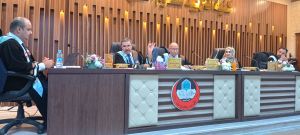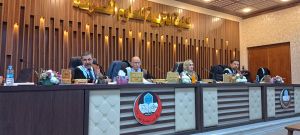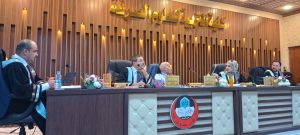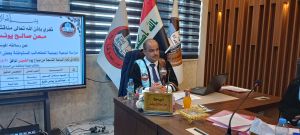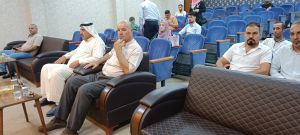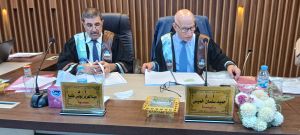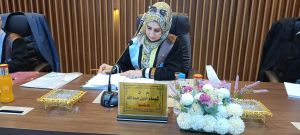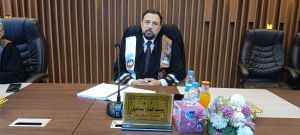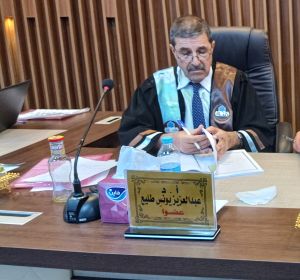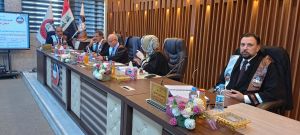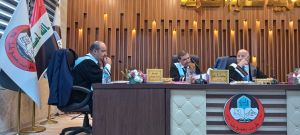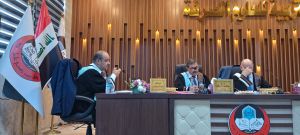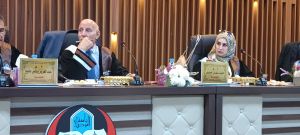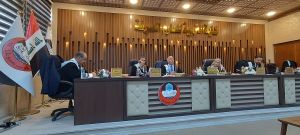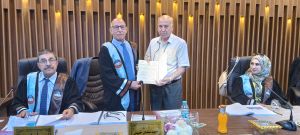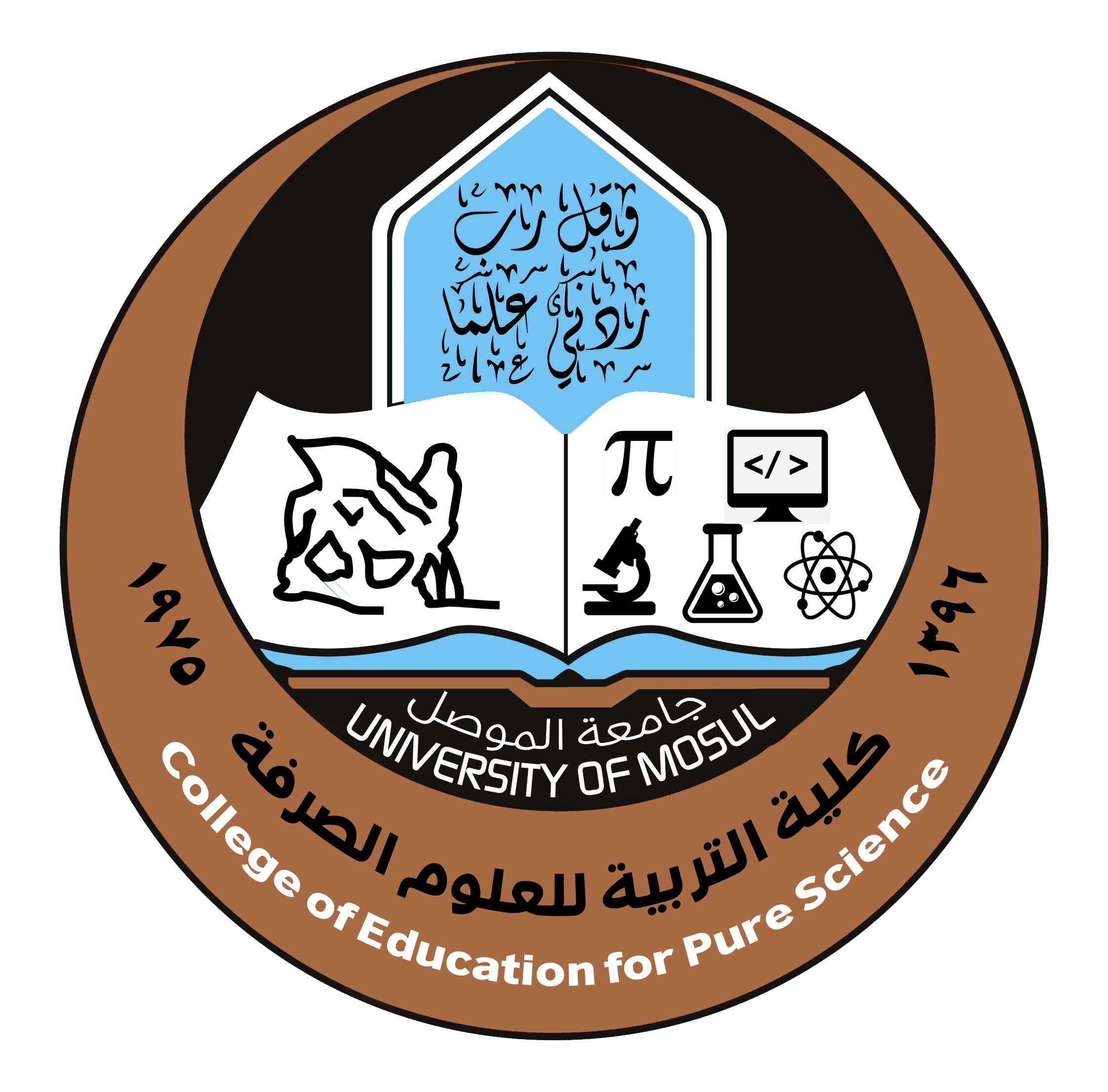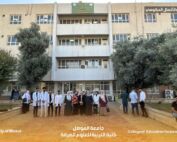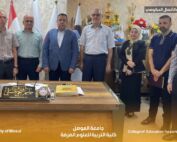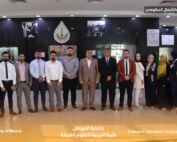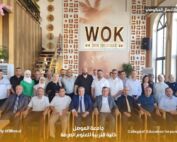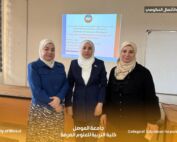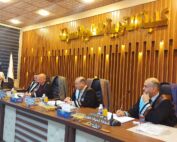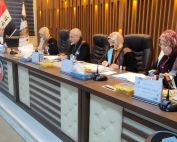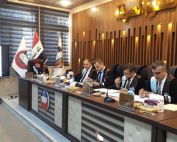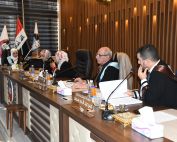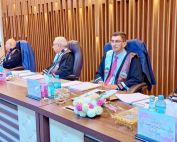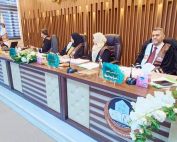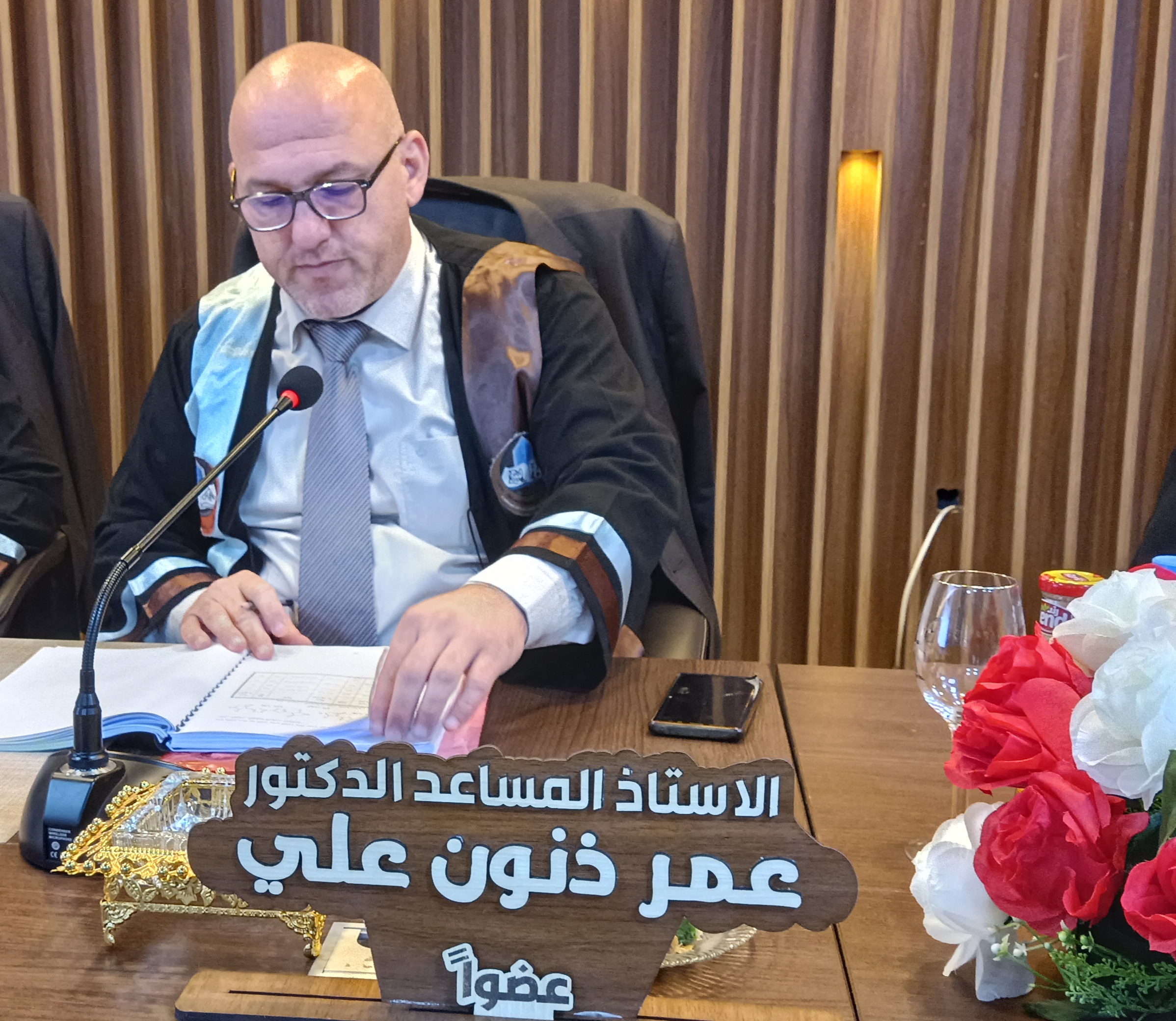31 August، 2023
Master Thesis Viva_ Biology Department
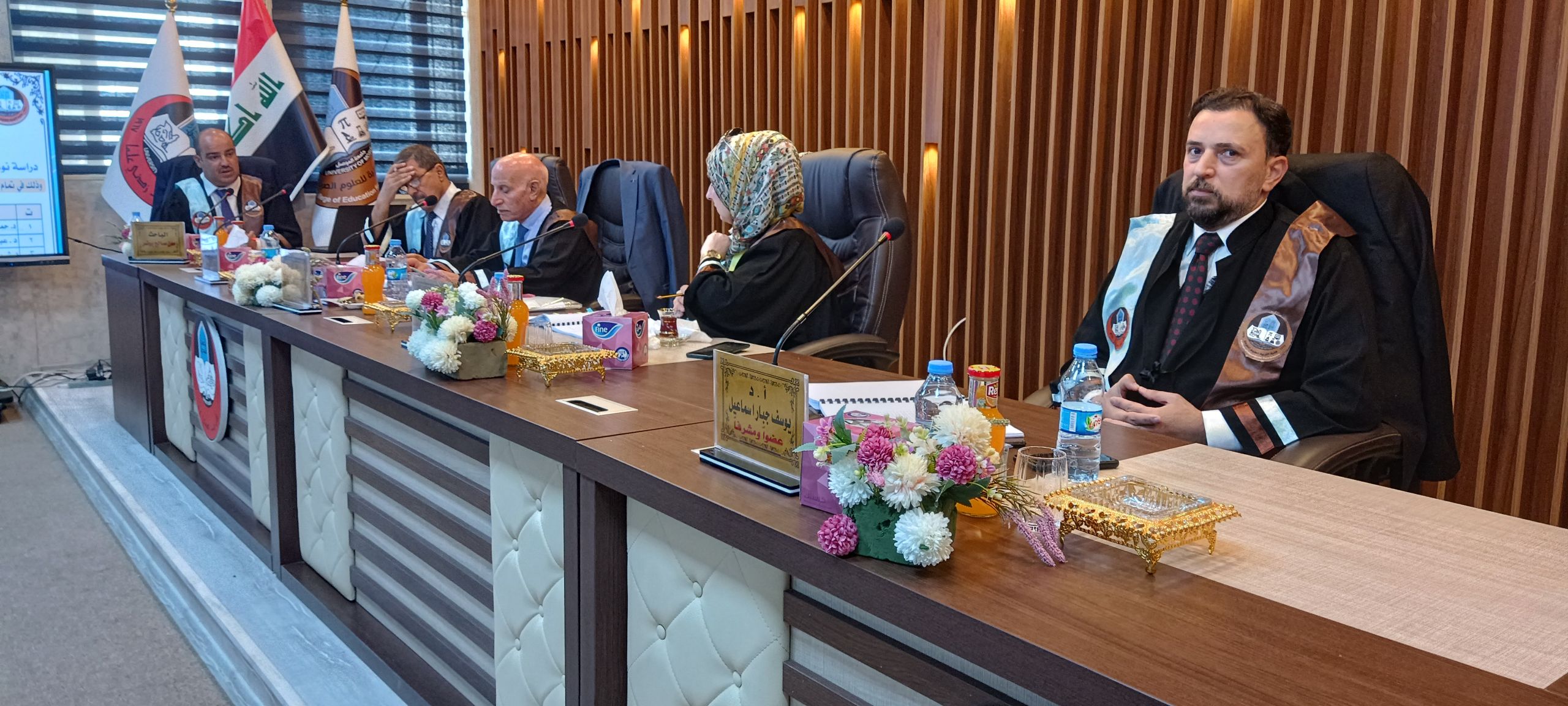
Master Thesis Viva in the College of Education for Pure Science entitled “Qualitative and Environmental Study of Algae Endemic to Some Sulfur Springs in Nineveh Governorate ”
The College of Education for Pure Science, University of Mosul, has done the Master Thesis Viva entitled ” Qualitative and Environmental Study of Algae Endemic to Some Sulfur Springs in Nineveh Governorate”,
On Thursday, August 31, 2023, the respected Dean of the College, Assistant Professor Dr. Qais Ismail Ibrahim, the Honorable Scientific Associate and Administrative Associate, the Honorable Head of the Department of Biology, and a number of the college’s teachers were attended the viva.
This study, presented by the M.Sc. Student Maan Saleh Younis Al-Taie in the Department of Biology, was conducted at the University of Mosul / College of Education for Pure Sciences, as the current study included the registration of a new isolate Crinalum magnum in the name of the University of Mosul at (Hammam Al-Alil) station for the first time in Iraq, where the results of the molecular diagnosis confirmed that the obtained isolate belongs to the family Gomontiellaceae and its exact international name Crinalum magnum by determining the sequence of the nitrogenous bases of the products of the replication reaction of the DNA sample of this isolate with the standard isolate in the GenBank.
Then, physiological experiments were conducted on the isolate to study the effect of some heavy metals on its growth. And its ability to form biomass, and the results of the study showed that the suitable culture medium for the growth of the isolate is Chu 10 medium, where the best growth of the isolate was achieved (1.70) with an optical density, and the maximum value of biomass was (890) mg / L, and the chlorophyll content was (90.0) mg / L. , and the protein content (195.0) mg/l, when copper was not added to the studied isolate, and the highest value of pH was (8.88), and the results showed a decrease in growth when continuing to increase copper concentrations, and the results showed that the highest value of biomass was (900.0) mg/ L, the best growth was (1.83) as optical density, the chlorophyll content was (90.0) mg/L, the protein content was (127) mg/L, and the final pH was (8.66) when cadmium was not added to the studied isolate, and the highest value of biomass was recorded. (870) mg/L, on the fifteenth day of incubation, the chlorophyll content reached a maximum of (180) mg/L, and the maximum pH was (8.33) when cadmium was added to the studied isolate. The studied isolate showed that it is sensitive to high concentrations of heavy metals. The best growth of the isolate reached (1.73) optical density when metal was not added to the isolate, while the maximum biomass value was (870) mg/l, and the chlorophyll content was (85.5) mg/l, when nickel metal was added to the studied isolate, and it was observed Obvious phenotypic changes of the studied cyanobacteria isolated locally with the use of a high concentration of heavy metals separately, as the decomposition of the filaments constituting the isolate was observed.
The physical and chemical tests were conducted for the sulfur spring water ((for different stations)), as it included temperature, electrical conductivity, pH, hardness, total alkalinity, chloride ions, sulfate ions, phosphate ions, and nitrates, as the values of air temperature for the study areas ranged between (3-43) degrees Celsius during the months of February and July, while the value of the water temperature reached (11-34) during the months of August and February. The electrical conductivity values were high during the autumn season and recorded (4439) micro siemens / cm, and low during the month of September ( (1067) microsiemens/cm, and a higher value of electrical conductivity was observed at the Edaya station, compared with the Hammam Al-Alil and Taregla stations. The pH ranged between (7.21-8.13) for the studied stations. As for the total hardness, the calcium and magnesium hardnesses. The highest values were recorded (1020,1500,2490) mg/l. During the winter months, while the lowest values were recorded during the summer and amounted to (182,310,510) mg/L, for total hardness and calcium and magnesium hardness, respectively. The values of sulphates ranged between the studied stations between (231-1449) mg/l, as it appeared that the Adaya region was superior to the rest of the stations, and the rest of the water samples were subjected to chemical tests such as alkalinity, chlorides, phosphates and nitrates.
The biological aspect included the recording of (37) species of algae in the sulfur spring water during the study period, and the genus Crinalum magnum was prevalent in all stations.
The Viva committee was chaired by Prof. Dr. Hamid Salman Khamis /University of Tikrit / College of Education for Girls and the membership Prof. Dr. Abdulaziz Younes Talee /University of Mosul / College of Education for Pure Sciences, Lecturer. Dr. Shaima Khalil Abdullah /University of Mosul / College of Environmental Sciences and Technologies and under the supervision and membership of Prof. Dr. Yousef Jabbar Ismail / University of Mosul / College of Education for Pure Science.
